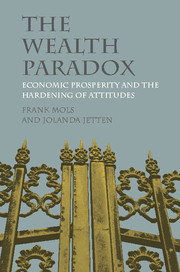References
Published online by Cambridge University Press: 13 July 2017
Summary

- Type
- Chapter
- Information
- The Wealth ParadoxEconomic Prosperity and the Hardening of Attitudes, pp. 192 - 209Publisher: Cambridge University PressPrint publication year: 2017

